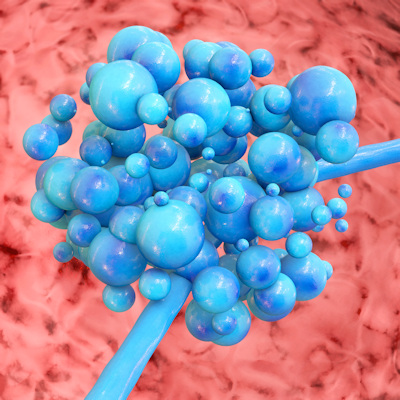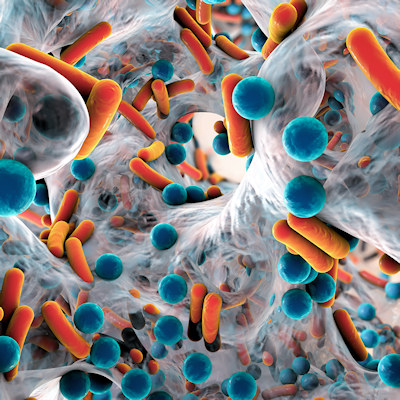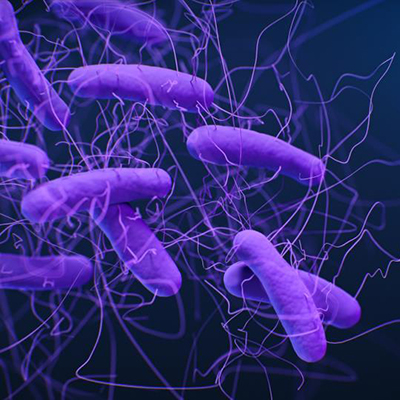March 27, 2023 -- A bile salt analog prevented Clostridioides difficile infection (CDI) in mice, pointing to a potential way to minimize the impact of a bacterium that kills 20,000 people a year.
The approach, details of which were presented at the annual meeting of the American Society for Biochemistry and Molecular Biology in Seattle on Sunday, targets endospores that are central to the process through which C. difficile establishes itself in the human body.
By forming endospores, the bacterium can survive the harsh conditions in the gastrointestinal tract and then germinate upon entering the intestinal lumen.
In the nutrient-rich lumen, the endospores germinate into toxin-producing vegetative cells. Those cells cause symptomatic infection and, therefore, a therapeutic that targets endospores could stop C. difficile before it takes hold and causes the diarrhea and other symptoms associated with CDI.
Researchers at the University of Nevada, Las Vegas have identified a potential way to stop endospores. The optical properties of endospores change when they start to germinate. Therefore, the scientists applied hundreds of different compounds to endospores and assessed the optical density of the spores to gauge if the candidates were inhibiting germination.
The screening process identified the aniline-substituted bile salt analog CaPA as a potential candidate. CaPA demonstrated potential advantages over CamSA, another bile salt analog that was previously found to inhibit C. difficile strain 630 but has limited activity against other C. difficile ribotypes, including the hypervirulent strain R20291.
CaPA was more effective than CamSA at stopping the germination of eight C. difficile strains. The effects translated into animal models, with CaPA reducing, delaying, or preventing CDI signs in rodents, with all strains tested and preventing CDI in hamsters infected with strain 630. There were no obvious signs of toxicity and only minor effects on the gut microbiome in mice treated with CaPA.
The researchers have work to do before a candidate is ready for use in humans. CaPA is too unstable in the gut to persist long enough to prevent CDI. In response, the researchers have developed a new set of molecules that are based on CaPA but designed to be more stable. Work is underway to learn how the liver modulates dosages of the compounds and how this affects the gut microbiota.
"We found that these compounds appear to move in a loop between the liver and the intestine, which means that the liver is enabling a slow release of these compounds to the gut," Ernesto Abel–Santos, a biochemistry professor at the University of Nevada, Las Vegas, said in a statement. "It might be possible to use the patient's own liver as part of the treatment plan."
Copyright © 2023 scienceboard.net









